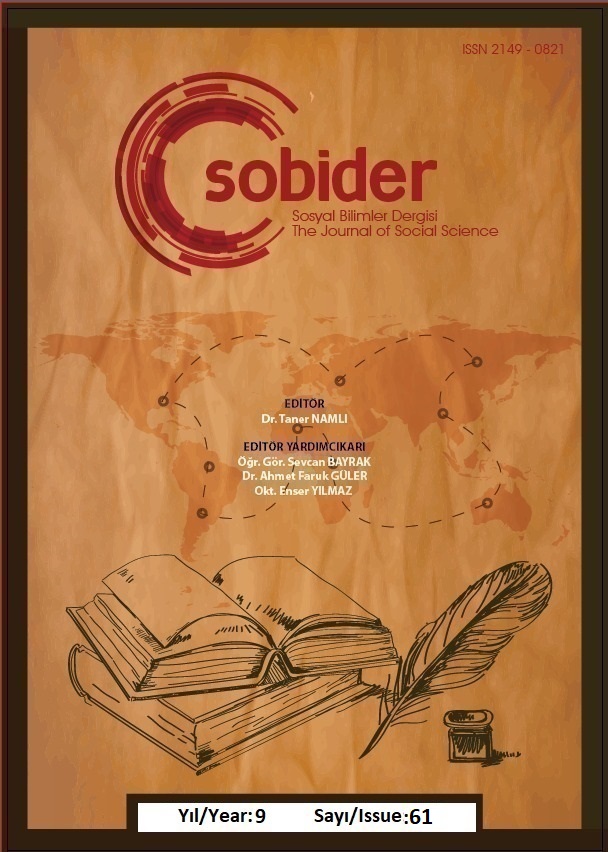Author :
Abstract
Modernizm sonrası sanatta, farklı disiplinlere özgü birçok malzeme, teknik, biçim bir arada kullanılmış, aynı zamanda önceden yüksek sanat statüsüne dâhil edilmeyen seramik gibi geleneksel sanat yöntemleri de sanat dünyasında kabul görmeye başlamıştır. 1980’lere uzanan dönemde tanımı ve kapsamı büyük ölçüde belirsizleşen heykel sanatı da bu değişimin içindedir. 1990 sonrası, üçüncü dünya ülkelerinin zanaatlarının yayılımı, eski sanatların kalitesinde işler üretme isteğiyle, heykel sanatında tüm yeniliklerin yanında kille modellemeye ilgi artmıştır. Seramik sanatının kendi içindeki tarihsel yolculuğu da 1990’larda bir kırılma yaşamış, kap-kacak gibi işlevsel uygulamaların dışında estetik kaygılarla eserler üreten sanatçılar seramik dünyasında seslerini duyurmaya başlamışlardır. Jamaika asıllı Amerikalı seramik sanatçısı Simone Leigh’nin antropomorfik eserleri, sanat dünyasında uzun süre göz ardı edilen seramik uygulamalarla ilgili, malzeme-teknik-içerik bağlantılarının aslında ne kadar çok yönlü ve olasılıklarla dolu olabileceğini anlatır. Siyahi kadın bedenlerini geleneksel kullanım nesneleri ve mimari yapılarla birleştirdiği formları tarihsel, etnik, ırksal ve cinsel kimlik göndermeleri yoluyla birçok anlam katmanı yaratır. Kullandığı malzeme, insan ve toprak arasındaki bağı görünür kılar.
Keywords
Abstract
In post-modern art, many materials, techniques, and forms with from different disciplines were used together, and at the same time, traditional art methods such as ceramics, which were not considered to be in the high art status before, began to be accepted in the art world. Sculpture art, whose definition and scope was unclear in the period dating back to the 1980s, is also affected in this shift. After 1990, with the spread of the crafts of the third world countries, and the desire to produce works in the quality of the old arts, the interest in modeling with clay increased along with all the innovations in the art of sculpture. The historical journey of ceramic art in itself experienced a break in the 1990s, artists who produced works with aesthetic concerns apart from functional applications such as pottery began to make their voices heard in the world of ceramics. The anthropomorphic works of Jamaican-American ceramic artist Simone Leigh explain how versatile and full of possibilities the material-technique-content connections can actually be, related to ceramic applications that have been ignored for a long time in the art world. Her forms, in which she combines black female bodies, traditional objects of use and architectural structures, create many layers of meaning through references to historical, ethnic, racial and sexual identity. The material she uses makes the relationship between people and soil visible.
Keywords
- Antmen, Ahu(2014), 20. Yüzyıl Batı Sanatında Akımlar, Sel Yayıncılık, İstanbul.
- Clark, Garth(2001), “Introduction”, Postmodern Ceramics, Marc Del Vecchio, Thames & Hudson, Hong Kong.
- Collins, Judith(2014), Sculpture Today, Phaidon Press limited, Hong Kong.
- Del Vecchio, Mark(2001), Postmodern Ceramics, Thames & Hudson, Hong Kong.
- Gaines, Malik(2014), “Simone Leigh”, Bomb, Spring 2014, No.127
- Koplos, Janet(2019), “Simone Leigh: Loophole of Retreat”, Ceramics, Arts and Perception, Iss. 114, p.62-63.
- Krauss,Rosalind(1979), “Sculpture in the Expanded Field”, October, Vol. 8(Spring, 1979), The MIT Press
- Kristeva, Julia(1982), Powers of Horror: An Essay on Abjection, (Translator: Leon Roudiez), Columbia University Press, New York
- Meschede, Frederich(2013), “Sculpture in Dialogue With The City”, Sculpture From Antiquity To The Present Day, (Ed: Georges Duby and Jean-Luc Daval), Taschen GmbH, Köln.
- Naubert, George W(2021), “Jun Kaneko: Between the Mark and Space”, Sculpture, Nov/Dec 2021, vol.40 / no.6
- Tuxill, Wendy Patricia(2010), “A Re-conceptualisation of Contemporary Sculptural Ceramics Practice From A Post-Minimalist Perspective”, A portfolio submitted fulfillment of the requirements of the University of Hertfordshire for the degree of PhD.
- Wyma, Chloe(2018), “Simone Leigh”, Artforum International, Vol. 57, Iss. 3.
- Görsel-3 https://universes.art/en/documenta/2002/binding-brauerei/gabriel-orozco
- Görsel-4 https://www.theguardian.com/artanddesign/2019/sep/25/anna-maria-maiolino-review-
- Görsel-11 https://www.artforum.com/print/reviews/201809/simone-leigh-77366
- Görsel-12 https://cfileonline.org/feature-2018-hugo-boss-prize-winner-simone-leighs-luhring-





